Long post alert.
Nothing is really ever new in menswear. The first “recent” trend to come back was the high waist and pleats , though I’ve been wearing those two for years thanks to vintage clothing. The next trend that has been sweeping the contemporary menswear circles isn’t really a design thing, but an affectation on how you wear your shirt collar. The thing is, this has been done since the 1920’s and continues to be done by veterans of the vintage community.
The Runaway Collar
Erik Mannby, editor-in-chief of Plaza Uomo, was the guy who (to me) coined the phrase “the runaway collar”. It’s named so because the open shirt collar isn’t held down by the lapel of a jacket; the collar “runs away” and flaps freely above it jacket. The look has a very “I don’t give a fuck” sort of vibe that rolls with the sprezzatura run rampant at Pitti Uomo. Obviously it was big at the last Pitti (92, which was in summer) but it’s pretty much caught on in a bunch of different circles. Perhaps it has to do with the return of the polo shirt amongst suit enthusiasts.
Amongst internet forums and traditional suit enthusiasts (read: not this blog or the vintage people), opinion on this style is split about 50/50. Some guys like it for it’s casual nature while others abhor it, probably recalling the 1970’s as the dark age of fashion. Hell, you might even remember the recent infamous picture of Mel Gibson rocking the look. As a result, this style is commonly called the “disco collar”, used as a term of derision. I mean just posting pictures of these examples (both old and new) publically by accident on imgur had random users comment about disco style and Saturday Night Fever.
I don’t think that this is a fair assessment though, since just wearing an open collar doesn’t make something 1970’s. The sharp dressed gentleman shown on this blog aren’t wearing polyester suits with severely nipped waists and heavily padded shoulders with bellbottom trousers. The seventies also used polyester in their shirts which makes them much too stiff and shiny, probably adding to the disco look. Here, there are no afros and sideburns to be found.
Instead you have well meaning sartorial dudes who are trying something new, that harkens to the past. They remove the 70s connotation by having softer suits (instead of the structured disco ones) and using more muted and earth tone based palettes. The entire vibe is a lot more relaxed and easygoing (read: sprezzatura) instead of the overly intentional, bold peacocking that characterized the disco era.
Either way, it’s a cool summer look that’s different than simply ditching the tie and unbuttoning two buttons. But I will say that the look isn’t for everyone. It takes some balls to actually do without being self conscious. Hell, I get self conscious when I do it because its such a stark contrast to everyone else who is dressing without a tie! I can’t imagine a die-hard trad or a corporate businessman doing this look. However, if you want to stand out in a vintage-throw back way and you’ve got the right pieces to do it, why not?
In Action

I wanted to start this long article with this post by Andreas (@flannels_and_tweed). Even he ponders how well the runaway collar works, doing the look himself with a polo shirt and suit. I will admit that the look does not look good here, which brings us to reason that the collar matters. If you’re going to do the look, you gotta get the shirt collar right; it can’t be wimpy. That’s the opposite of the 1970’s problem.
You can note that the polo shirt collar is a little too spread out, and fastening the button results in a very odd, asymmetrical shape. We like imperfection on here, but on Andreas it just looks sloppy. Just compare it to the other examples.

Above is a great example of the runaway collar on a polo done right. Yes the polo is still soft, but the actual collar has enough width (and structure-ish) to lay well on the lapel. Worn with a navy linen suit, this outfit doesn’t scream disco era. Instead, it’s a very sharp, casual look of our contemporary classic menswear world. Great hair and beard is definitely optional but recommended.
Polos are probably the easiest way to get the look down, since their construction is usually more slouchy and stretchy to add to the casual vibes. Most polos today are going for a wider collar (like the Eidos one on Erik) and seem to be specifically made to be worn like this. It’s a great way to wear a polo with a suit or sportcoat without looking like a business casual accountant.
Note: Look at all the subdued colors! I’m glad to share that warm weather suiting isn’t always about white or pastes.





Next you’ll see it worn with full button-up shirts. It’s a little bit rarer and harder to pull off, but you can see that it still makes for a sharp look. Since dress shirts are obviously more dressy/formal than a polo, it takes special types of shirts to get it right. Careful attention to fabric and collar style is needed.

Here we have a traditional striped dress shirt worn with the run-away collar. However, note that the shirt collar itself is a “one piece”, making it very similar to the polo shirts below. Most of the time, one piece collars are very soft since it is made of one continuous piece of fabric. With a medium spread like this one (from B&Tailor), it’s a perfect match for the runaway collar look.

Softness in action again with George Wang, founder of Brio Beijing. I’m pretty sure that this is a one piece collar again, cut from some soft cotton or linen. The entire outfit just screams sprezzatura to me and I really do aspire to have this “cool effect” in my pictures. It’s very different than if you were to wear the collar on the inside of the shirt, which is definitely more formal (and expected).

Texture coming into play with this denim (or chambray?) shirt with the runaway collar. Textures play up the casual nature.


A third option exists for guys who want to stand out even further. The loop collar shirt (also known as the Cuban or Camp Collar for some fuckin’ reason, I don’t know) has been making a come back and guys have started wearing them with their suits and sportcoats! Gives you some 1950’s and early 1960’s vibes.
If you’re wondering why I don’t mention the 1940’s is because the design of the shirt isn’t period correct. A sharp, angular collar is very post war while longer, curved (and soft) ones are earlier.


That collar is insane.

I want to give Chad Park from B&Tailor a shout out for being absolutely ballsy with this ensemble. He wears a DB jacket with an amazingly designed loop collar shirt cut from a floral fabric. This is one of the perfect blends of Golden Era style and contemporary tailoring that I’ve seen.

Now while one piece shirts and the “new” loop collar shirts can look good, I still think it’s a bit too stuffy. It’s almost always used with plain shirts, which are boring to me. In addition to the collar points being much too short for my liking, the collars end up being too clean and “pressed”; most menswear enthusiasts refrain from ditching the lining and fusing in their collar. Just look at the picture of Chad Park. Yes, the shirt looks great, but it hovers above the lapel. It doesn’t have the true slouchiness of the vintage style. I think the runaway collar could be best served by mixing the softness of a polo shirt with the “dressier” collar styles of the loop collar and regular dress shirt. But let’s move on to another topic.
Many times, these guys like the spout out “70’s throwback” or “disco vibes” or even “Cuban (still don’t know why this term is used)” when rocking the runaway collar. I hate to break it to you, but John Travolta wasn’t the first person to do this. In my opinion, I think that the best place to look for inspiration for this look is to go back to the 1920s-1940s.
I mean you saw this coming, right? What else could you expect from Street x Sprezza!
It’s Older Than You Think
You’re going to see a bunch of pictures and illustrations from the Golden Era (1920-1940) of guys (mainly young ones) rocking the runaway collar. It’s not a trend; it’s just what guys did when they decided to ditch their tie! Here are some things to note though: back then, fusing and stiff interlining wasn’t invented yet, so a majority of these dress shirts were soft. Sure some guys starched them, but I believe that it was a small rebellion against the stiff detachables of the edwardian era and the early 1920s. As a result, guys could easily flop their collars over their jackets to be casual.
Note that the styling here is radically different than the 1970’s disco days. There aren’t any super saturated, bright polyester shirts and suits. In fact, “smooth and shiny” suits weren’t even a thing until the sharkskin days of the 1960’s. Outfits back in the Golden Era involved much wider use of textures and patterns, which contrasts with the 1970s. There also aren’t any paisley shirts in this section. There’s nothing inherently wrong with paisley shirts, it’s just a very 1970’s affectation that I find difficult to incorporate with the outfit.
Another tidbit to know is that shirt collars were shaped differently back in those days. You might remember that we’ve talked about spearpoints in our general overview of vintage style and our guide to creating a vintage look. This small detail makes all the difference! It’s not as triangular as a regular point collar, which removes the connotations to the 1970’s. These pointed (but curved) shapes and longer point length was found on almost everything from dress shirts to polo shirts and sport shirts. This combined with the fact that these collars were softer add just enough difference to how the guys wear the runaway collar today. When confronted with who wore it best, I’ll give it to the vintage guys everytime.
The look obviously isn’t for everyone, but it’s important to see a great example of it done right! To us, at least.

1920’s casual at the beach. Look at those slim trousers!

Floppy spearpoint collars at the bar.

A 1930’s polo resting wonderfully on James.



Great example to use for future reference and inspiration!

The 1920’s again!

Walt Disney rocking it with a leisure suit.



1920’s style.


Those collars look soooo soft.



Late 1940’s styles with incredibly designed collars.

Why can’t this be at Pitti?



Fucking dope inspiration by wearing a print loop collar shirt with a pinstripe DB suit.
Doing it Our Way
In the spirit of this article (which has been a long time coming, believe me), I decided to craft some outfits with the runaway collar. I also tried to find some outfits from our archives that show the look well! It’ll mainly be Spencer and I, since we’re one of the few guys who mix vintage and contemporary in a slightly subtle way. I could show you pictures of guys in the vintage community doing this, but it’s really do different than the true vintage examples you just saw.
We will probably get “disco” comments from a lot of people, but I think that when our styling sets it firmly apart from Saturday Night Fever. Like the vintage examples above, we wear the runaway collar with a variety of textured suits, from smooth worsted and soft flannel to scratchy linens and rough camel hair. It’s not a look that’s restricted to summer; it can be done almost anytime when you want to dress down.
Unlike the guys at Pitti Uomo and the rest of the contemporary vintage community, we also do the look with “regular dress shirts”. This means that we do the runaway collar with checked and striped shirts instead of just plain ones. You might think that it makes the outfit harder to wear, but you have to think of it as an extension of “sprezzatura”. We simply ditch the tie after work and do the runaway collar to emphasize the casualness. We don’t do it all the time but it certainly makes for an interesting, vintage throwback look.
It also helps that almost all of our collars are extremely soft without any fusing. This extends not only to our spearpoint dress shirts, but our casual loop collar shirts (in a variety of fabrics), hawaiian shirts, and 1930’s polos.
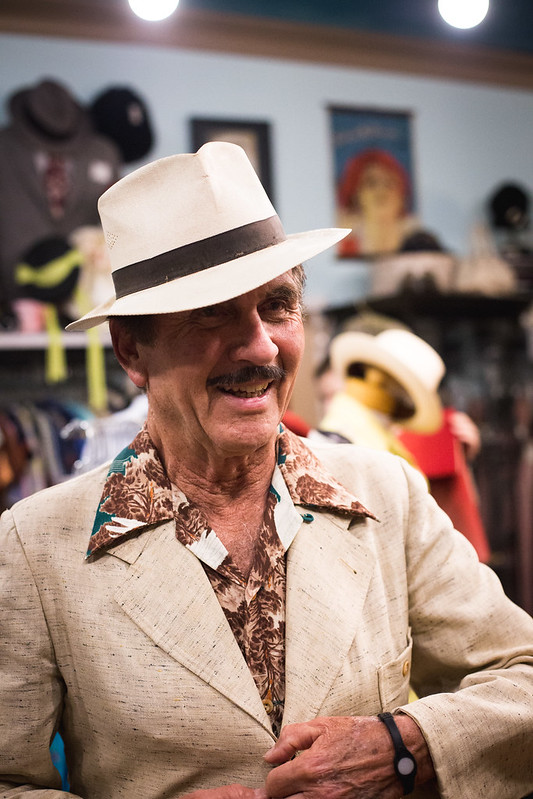
1940’s hawaiian shirt with the best suit I’ve ever seen (german 1930’s linen suit)

One of my favorite looks: checked shirt with flannel jacket. The patterned shirt is defininitely something you would not find in the 1970’s.

SJC polo with an ivy outfit.

1950’s rayon shirt with a linen jacket.

SJC polo with a contemporary linen suit.
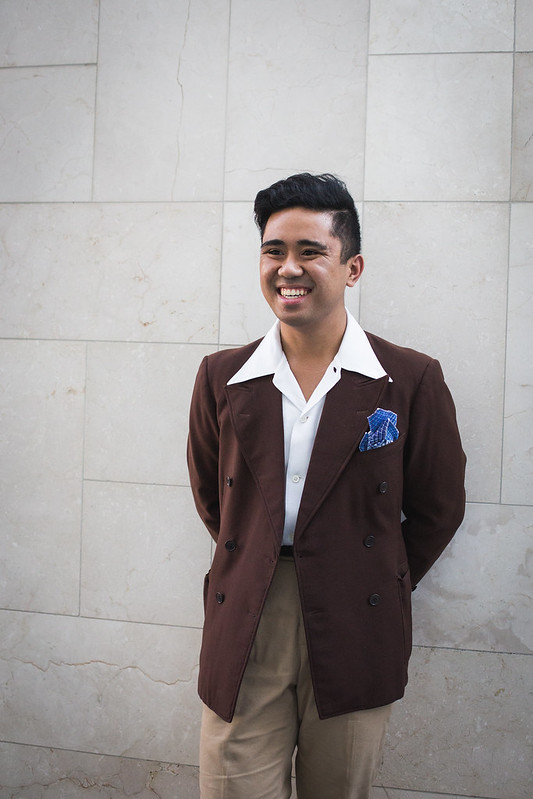
1940’s cotton loop collar shirt with a brown DB and pleated chinos. Note the collar is very 1940s.

Blake killing it in an amazing solid ensemble.
Conclusion
The runaway collar is a cool “new” trend that has men calling back to the 1970’s and “cuban style”, even though both of those things aren’t exactly accurate. Guys have been propping up their collar over their jacket lapels since the 1920’s as a casual affectation. Whether they were just off work in their dress shirts or wearing a polo/loop collar shirt, they would rock the runaway collar. It’s such a great look that feels effortless (as it should be) that makes me sad that it’s going to forever be associated with the disco era. However, I am glad that guys in the contemporary menswear world are giving it a better name.
My advice to those of you who want to do the look is to not take it seriously. It will be an eyecatcher but you can’t let that bother you! I mean if you’re reading this blog, you probably already do look odd wearing vintage or vintage inspired clothing. Why not own it? The entire point is to lose the “gentlemanly-ness” and dandy stature and appear effortless in your clothes. If your stature is too polished, you’re losing the effect of the runaway collar. Whether you go for contemporary classic style, vintage inspired, or true vintage, you need to make the outfit look easy. That’s what’s so intriguing about it! All the guys at Pitti Uomo look relaxed and all the vintage guys look relaxed. Personally, I think it looks better when its the natural evolution of your work attire: you ditch the tie off your spearpoint and do the runaway collar.
Just remember that your shirt collars should be soft! That’s my one gripe with some of the shirts on the Pitti guys; they look too stiff and clean. The vintage inspirations all have soft collars that just flop down on the lapels. My friends and I follow that example and ensure that our shirt collars are unfused to make them rest as softly as possible. If they wrinkle or curl, that’s all apart of the easy going charm of the runaway collar. If you don’t feel right wearing it with a dress shirt, the loop collar shirt is a great casual-only alternative.
In general, the shape of your collar also matters. If you do it with a standard, overly triangle point collar shirt (in a bright, solid fabric) will do you no favors and will definitely look disco. By using prints, checks, stripes in a curved spearpoint or loop collar shirts or just trying it with a polo, you’ll pull it off better than disco guys or a Russian mafioso.
Again, the look isn’t for everyone and I’m certainly not advocating its wide-spread use, but why not try it? 10 times out of 10, keeping you collar within your jacket lapels will be better than pushing outside. Hell, I love the look of the rolled ivy button down collar shirt worn with a jacket sans tie. But why not the runaway collar at least once? I do it from time to time when I feel like rocking my vintage collars without a tie. It’s certainly something different, and we always like to be a little different than the other sartorial guys.
Always a pleasure,
Ethan W.

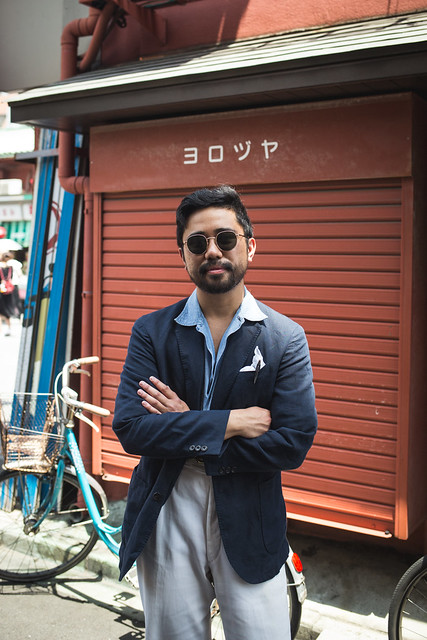


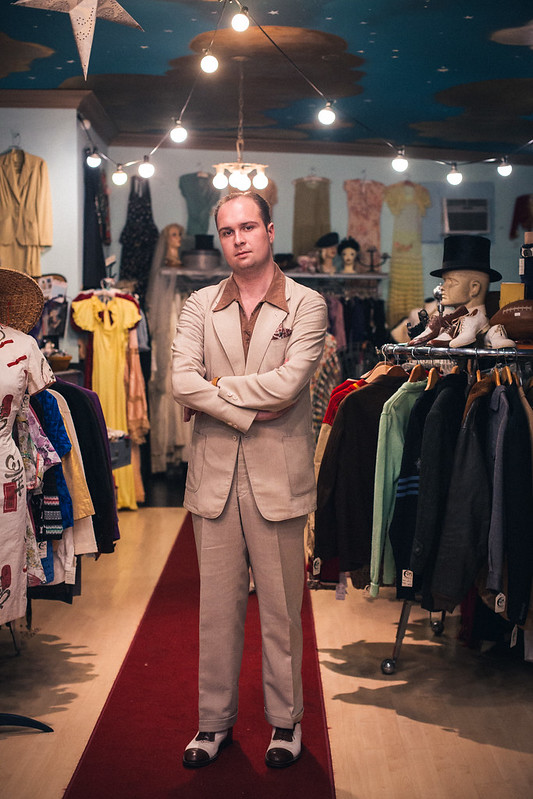


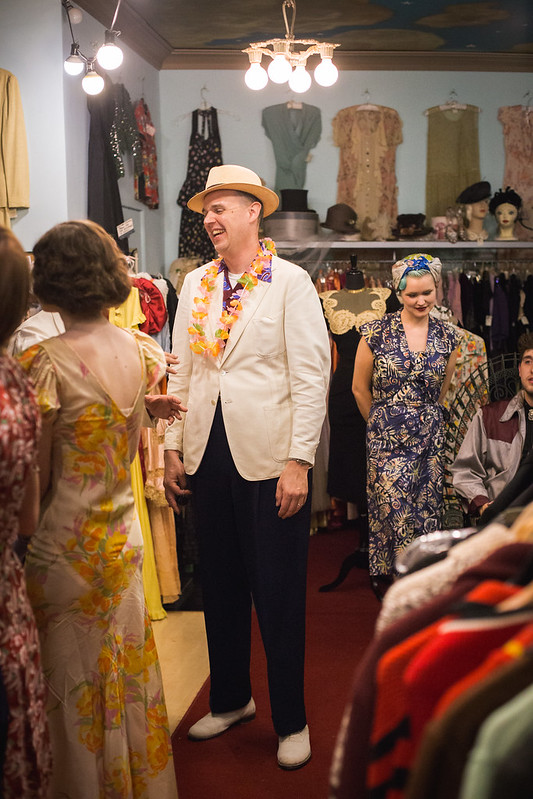
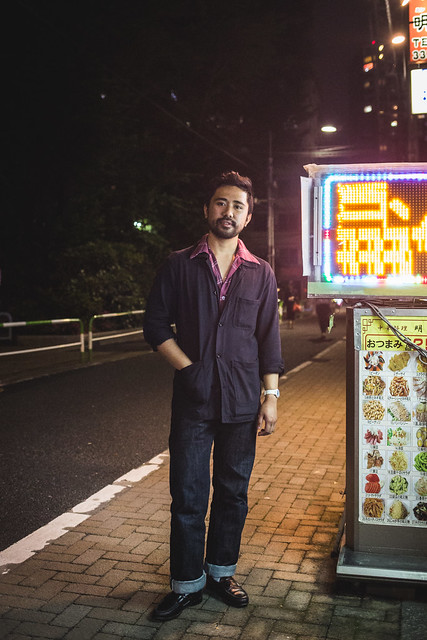


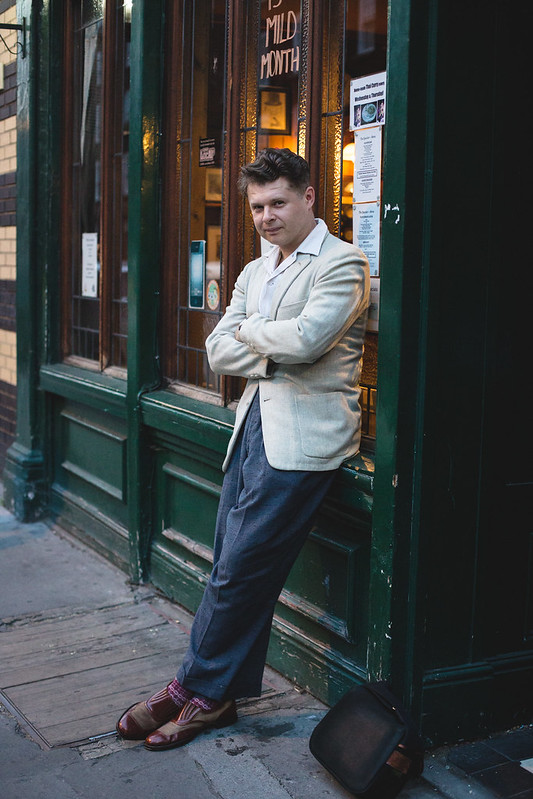


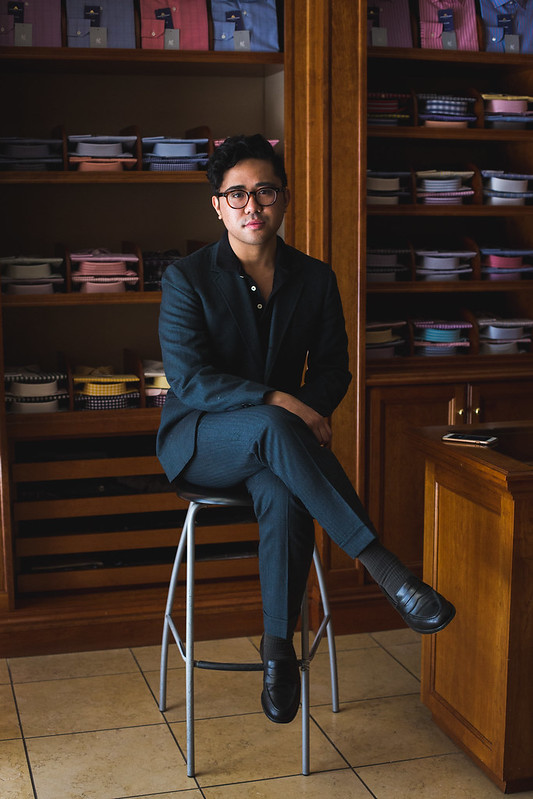
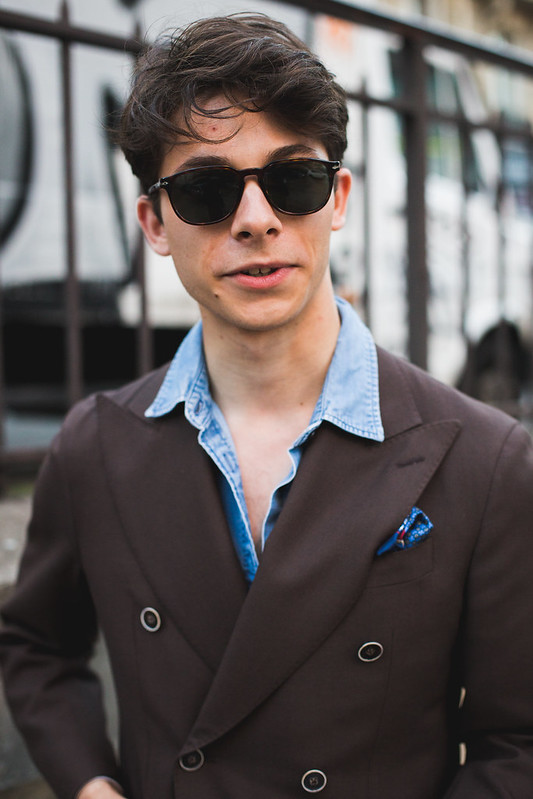


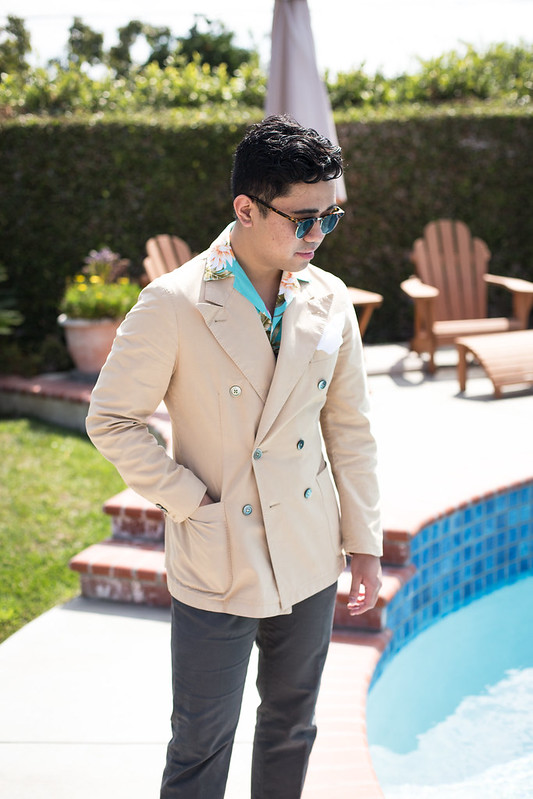
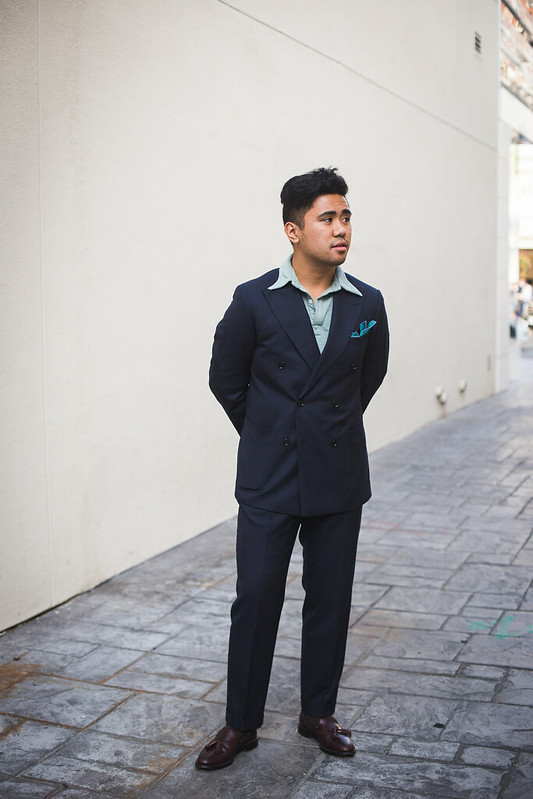
63 comments